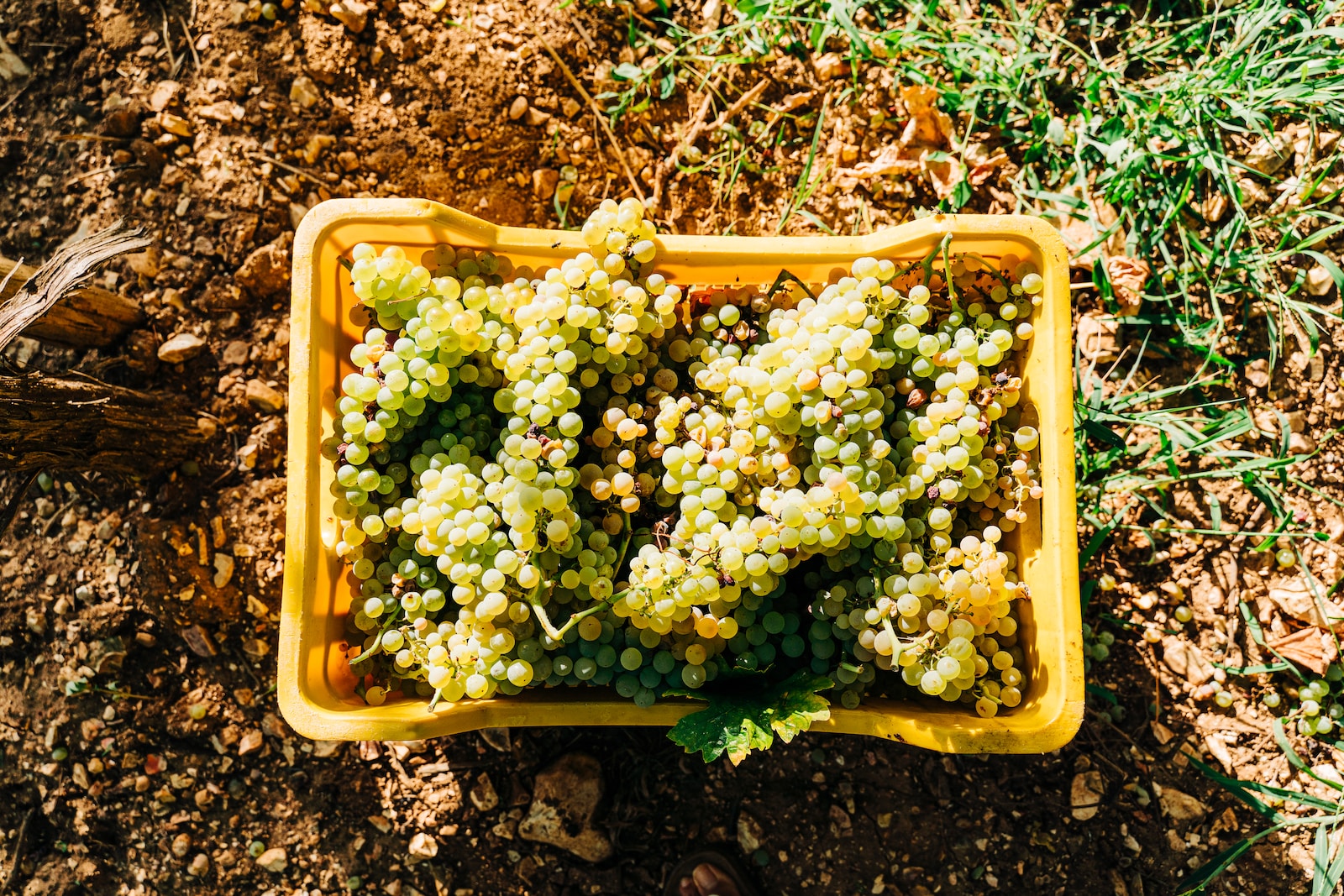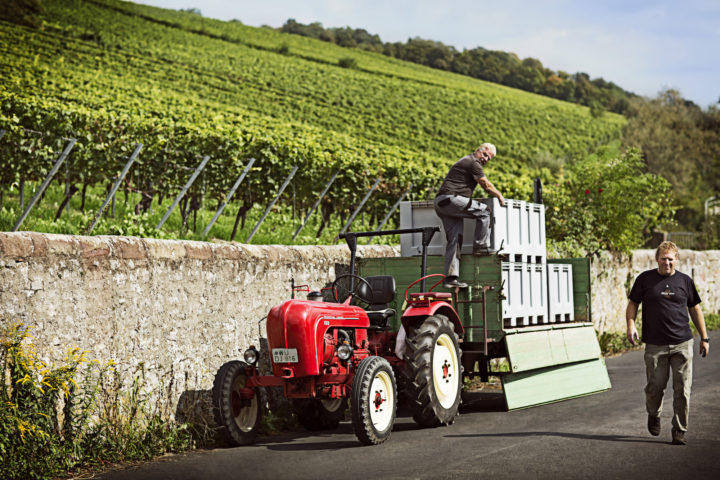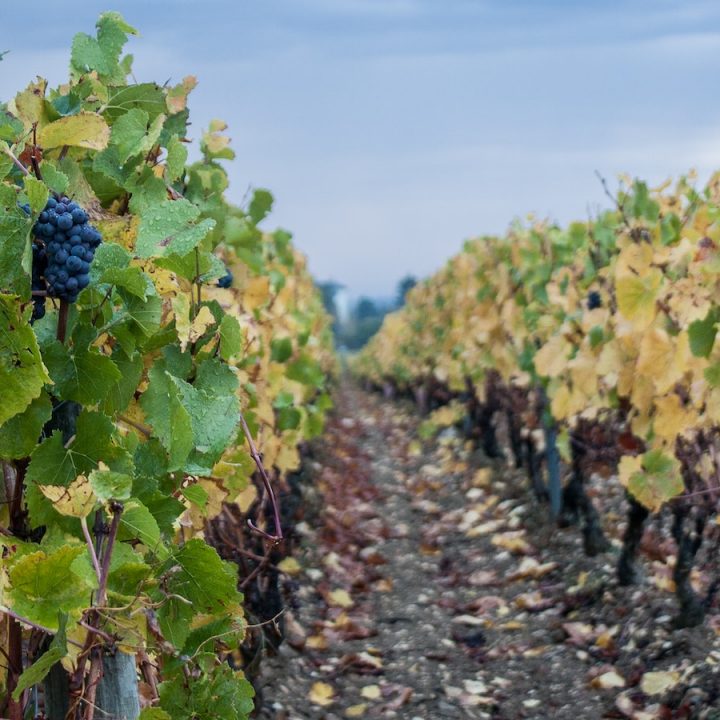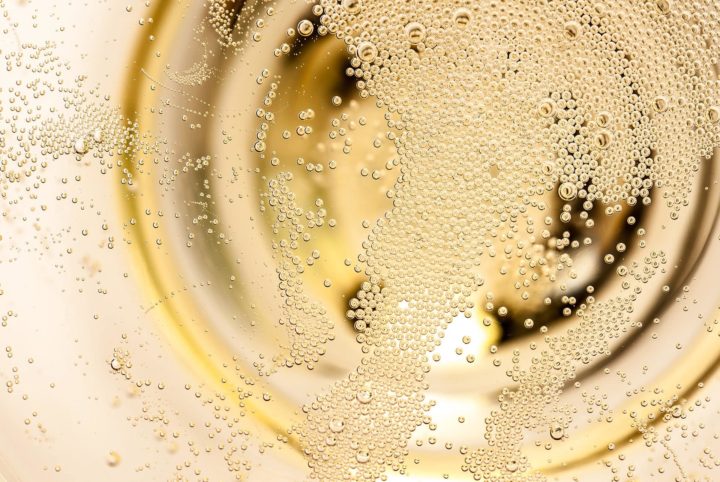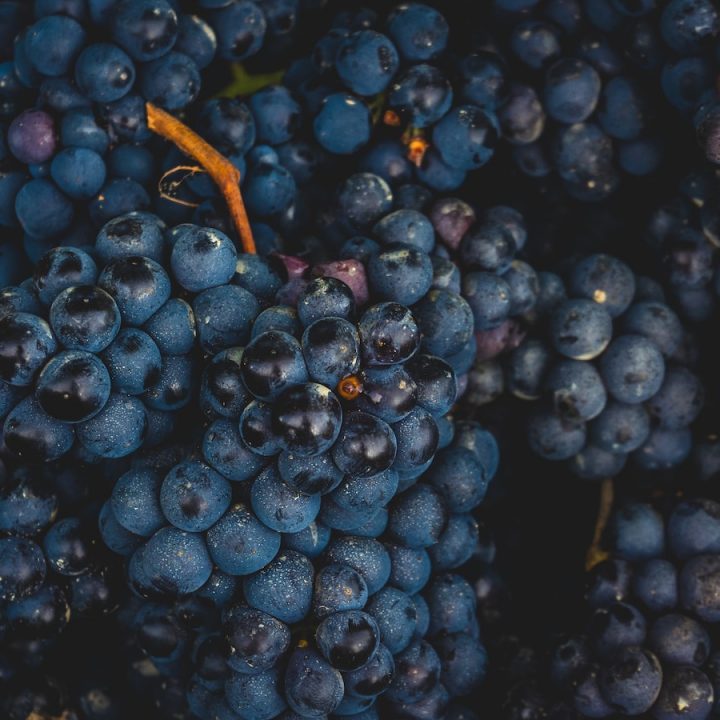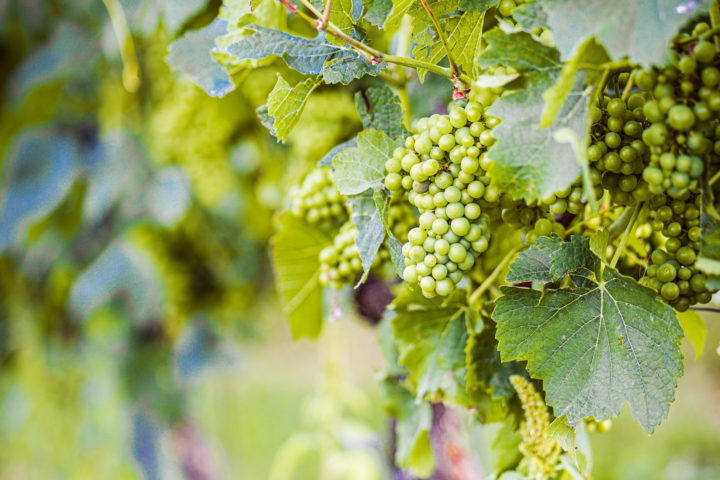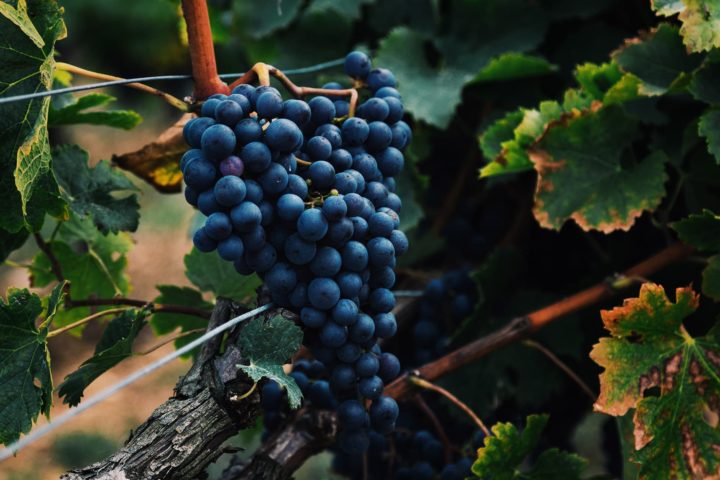Chenin Blanc is one of the most versatile and unique white wine varieties, which for centuries has aroused the enthusiasm of wine connoisseurs. With its pronounced acidity and a varied flavor profile, it won a special place in the wine world and is also ideal for sparkling wines such as Crémant de Loire. It is one of the adaptable grape varieties and can produce a wide range of white wine, from sparkling and dry to noble sweet and full-bodied.
In this article, we delve into the world of the grape belonging to the French noble grape varieties (Cépages nobles) and explore its flavor profile, characteristics, wine styles, appropriate pairings with food, serving tips and, of course, its historical background. We also present the best wine regions where Chenin Blanc is grown. Finally, we will discuss the versatility of the grape variety in winemaking and its role in the global wine market.
Join us on a journey of discovery and learn everything you need to know about the grape variety and the wonderful wines it produces.
Taste profile and characteristics of Chenin Blanc grape variety
Among winemakers and wine connoisseurs, the grape is known for its high acidity, diverse flavor spectrum and enormous yield. Depending on the terroir, climate and winemaking techniques, it produces wines with a wide range of aromas. This means that a Chenin Blanc wine can show a variety of flavors, from zesty citrus and green apple to plum, ripe tropical fruit and honey. Especially with dry representatives, the aromatic differences can vary greatly from vintage to vintage.
One of the most distinctive characteristics of Chenin Blanc is its high acidity, which gives the wines a refreshing and crisp character. At the same time, the acidity is responsible for the long-lived sweet wines that develop complex notes of saffron, cardamom or turmeric as they mature. In addition to its fruit-driven profile, Chenin Blanc also shows mineral notes, especially in wines from the Loire Valley in France.
Another interesting point of the Chenin Blanc flavor profile is its potential for making noble sweet wines. Due to its high acidity, this grape variety can produce wines with varying degrees of sweetness, from bone dry to lusciously sweet dessert wines. This makes Chenin Blanc a versatile choice for wine lovers.
Taste: From dry to sweet
Its versatility is also reflected in the wide range of wine styles obtained from it. Depending on the type of aging and the region from which it comes, dry, semi-dry, sweet or sweet white wines are made from Chenin Blanc. Below, we’ll take a closer look at each style.
Dry Chenin Blanc wines are characterized by their high acidity and crisp, refreshing taste. These wines have clear fruit aromas such as green apples, pears and citrus, as well as mineral and flinty notes. The dry varieties are usually aged in stainless steel or neutral oak barrels to preserve their fresh, fruity character.
Semi-dry Chenin Blanc wines have a slight residual sweetness, which is balanced by the natural acidity of the grape. As a rule, they have a fuller mouthfeel and show a wider range of fruit flavors, including ripe stone fruit as well as tropical components. Semi-dry Chenin blancs are also aged in stainless steel, neutral barrels or even new oak barrels, depending on the character sought.
Noble sweet and sweet Chenin Blanc wines are made by allowing the grapes to ripen longer, thus developing a higher sugar content. The use of botrytis infested grapes is also popular in the production. The result is rich, lush wines with complex notes of honey, apricots and quince. Sweet wines of the Chenin Blanc variety like to be aged in oak barrels to give them further nuances of flavor, such as vanilla and toast.
Tips for suitable dishes for Chenin Blanc wines
Its high acidity and diverse flavor profile make Chenin Blanc an excellent food companion for a wide range of dishes. The key to a successful pairing with Chenin Blanc is to consider the style, acidity and sweetness level of the wine in question.
Dry examples are best for light, fresh dishes that can handle the wine’s tangy acidity. Seafood such as mussels, shrimp and ceviche pair well with dry Chenin Blanc, as do green salads, goat cheese and grilled vegetables.
Semi-dry wines pair very well with slightly richer meals such as roasted poultry or pork, as well as dishes with some sweetness or spice. These include Asian dishes such as Thai or Vietnamese cuisine, Moroccan tajines or Indian curries.
Residual sweet and sweet types are ideal for desserts, especially fruit-based desserts such as tarts, cobblers and crumbles. You can also serve them with strong, sharp cheeses like blue cheese or rich, creamy desserts like crème brûlée and pannacotta.
How to properly serve the white wines of the white grape variety
To fully appreciate the nuances and complexity of white wines, they must be served at the right temperature and in the appropriate glass. The right drinking temperature significantly affects the taste and aromas of a wine, and Chenin Blanc is no exception.
Dry and semi-dry Chenin Blanc wines should be served at a temperature between 7°C and 10°C to fully appreciate their refreshing qualities. Sweet wines should be enjoyed slightly warmer, between 10 °C and 13 °C, which highlights their complex character.
The most suitable glass is a white wine glass with a medium-sized goblet and a slightly tapered neck. This shape allows the aromatic substances of the wine to concentrate in the glass and flow to the nose, while the wine has enough space to develop in the glass.
History and origin of the grape
The origin of the grape variety Chenin Blanc is in the French region of Anjou, where it has been cultivated since at least the 9th century. It is a natural cross of the varieties Sauvignon blanc x Trousseau. Later, the grape variety reached the neighboring Loire Valley, where it has become synonymous with the famous white wines of the region.
It is believed that the name derives from the French word “chien”, which translates as “dog” and refers to adaptability of the grape. Still others believe that its name comes from the town of Chinon in the Loire Valley, where the grape was once widely grown.
Throughout its history, the variety has been appreciated for its versatile and adaptable characteristics, both in the vineyard and in the cellar. As a result, it spread beyond France to many other wine regions of the world, including South Africa, where it is now the most widely cultivated white vine. In the Cape, by the way, the variety is better known by the name of Steen.
Anjou, Vouvray, Saumur and Touraine: Famous Regions in the Loire Valley
Although Chenin Blanc can be found in a wide variety of wine-growing regions around the world, it is most readily associated with the Loire Valley in France. This diverse and vast region is home to numerous appellations that produce exceptional Chenin Blanc wines, including the Vouvray, Touraine and Anjou regions.
The Vouvray appellation is perhaps the most famous region in the Loire Valley where Chenin Blanc is grown. It is known for its diverse styles of wine, ranging from dry to sparkling to sweet and lush. Wines from Vouvray are characterized by high acidity, minerality and complex fruit aromas that can range from green apple and citrus to ripe stone fruit and tropical notes.
Touraine is another notable appellation on the Loire, where lighter-bodied and fruitier white wines are made than those from Vouvray. These wines can be dry, semi-dry or sweet, but have a refreshing acidity and a bright, spicy flavor.
Anjou, in the western part of the Loire, is known for its aromatic sweet wines made from Chenin Blanc, especially from grapes with noble rot. These lush, honeyed wines are characterized by their richness and complexity and are reminiscent of apricots, quince and candied fruit.
Chenin Blanc is successful not only in the Loire Valley, but also in South Africa, where it is the most widely grown white grape variety. South African white wines tend to be fruit-driven and lively, with flavors ranging from green apple and citrus to ripe peach and tropical fruit.
| Wine-growing country | Vineyard area in hectares |
| South Africa | 17.707 |
| France | 9.432 |
| Argentina | 2.157 |
| United States | 1.969 |
| Australia | 406 |
| Mexico | 275 |
| Spain | 106 |
| Ethiopia | 54 |
| Chile | 39 |
| New Zealand | 24 |
Versatility of Chenin Blanc in winemaking
One of the most fascinating aspects of Chenin Blanc is its incredible versatility in winemaking. The vine has the unique ability to produce a wide range of wine styles, from bone dry and mineral to intense and lush, making it the favorite of many winemakers and wine lovers alike.
Vinification in oak barrels is particularly suitable for Chenin Blanc. This gives the wine additional complexity and flavors, such as vanilla and toasted aromas, while giving it a creamy texture.
In addition, Chenin Blanc is popular for the production of sparkling wines, both by the traditional method (where the wine undergoes a second fermentation in the bottle) and by the tank method ( where the second fermentation takes place in a large tank). These sparkling Chenin Blanc wines can be dry and crisp, or sweet and fruity, and are enjoyed as an aperitif or paired with seafood.
In the production of dessert wines from the variety, are often used noble rot grapes. In this process, the grapes are allowed to develop the noble mold Botrytis cinerea, which penetrates the grape skin, dehydrates the fruit and thus concentrates the sugar content. This leads to noble sweet wines that are characterized by a rich and honey-like character.
Its role in the international market
Although it is not as well known as other white grape varieties such as Chardonnay, Riesling or Sauvignon Blanc, it plays an important role in the global wine market. Chenin Blanc is grown in numerous countries around the world, including France, South Africa, the United States and Australia, and is very popular with wine lovers everywhere.
In South Africa, Chenin Blanc is the country’s most important white grape variety, with over 18,000 hectares under vine. South African Chenin Blanc wines are known for their vibrant fruit flavors, high acidity and excellent value, making them a popular choice among consumers.
In the United States, it is grown primarily in California, where it is used to make a variety of wine styles, from dry and crisp to sweet and lush. California Chenin Blanc wines are often fruit-driven and easily approachable, with aromas of green apple, citrus and tropical fruit.
In France, Chenin Blanc remains an important grape variety in the Loire Valley, especially in appellations such as Vouvray and Anjou. These wines are highly sought after by wine lovers around the world and are known for their complexity, elegance and ability to age gracefully.
The many synonyms of the grape
Agudelo, Agudillo, Anjou, Blamancep, Blanc d’Anjou, Blanc d’Aunis, Blanc Emery, Blanco Legitimo, Bon Blanc, Canton, Capbreton Blanc, Chenen Belyi, Chenin, Chenin Bijeli, Confort, Coue Fort, Cruchinet, Cugnette, Feher Chenin, Franc Blanc, Franche, Gamay Blanc, Gout Fort, Gros Chenin, Pineau Blanc, P. d’Anjou, P. d’Unis, P. de Briollay, P. de la Loire, P. de Savennieres, P. de Vouvray, P. Gros, P. Gros de Vouvray,
Conclusion: Discover the wonderful world of Chenin Blanc
A versatile and unique grape variety, Chenin Blanc has captured the hearts of wine lovers around the world. With its high acidity, diverse flavor profile and ability to produce a wide range of different styles, it is truly an asset to the wine world.
Whether you prefer dry, crisp wines or rich, sweet types, there’s a Chenin Blanc to suit every palate. So dive into the world of great French white wines and discover what this amazing grape variety has to offer. Cheers to Chenin Blanc and have fun exploring!
